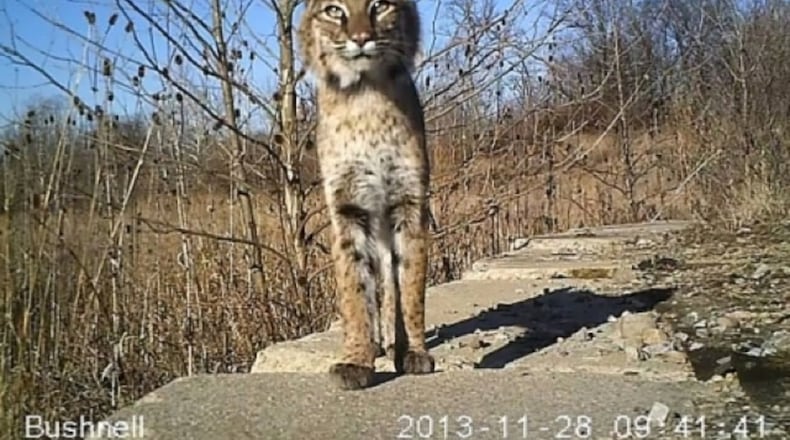That was apparently the case with one struck by a vehicle in Butler County earlier this month.
A Facebook post shared by Diane Phelps shows what appears to be a dead bobcat in the back of a pickup truck.
“Just a heads up, this was hit in Shandon!” the post from Feb. 13 says. “I know there have been some sightings in town.”
Brett Beatty, wildlife management supervisor with the Ohio Department of Natural Resources, said the carcass has been turned over to the state as required by law.
Bobcats are a protected species, so it’s illegal to hunt or keep them, even animals accidentally killed.
Although bobcats are more commonly sighted in southeast Ohio — it’s the mascot of Ohio University in Athens, after all — they’re rare in Greater Cincinnati.
Fernald Preserve, near where the bobcat mentioned above was struck, has had sightings since at least 2012. Beatty said he’s heard of bobcats in the western part of the state, which his district covers, ever since he started working the area 15 years ago.
Unlike coyotes, another carnivore living in the Tri-State, bobcats are native to Ohio. They were wiped out in the mid-1800s as they lost their habitat to farming and logging, and because of unregulated trapping and hunting.
MORE: Plan to invite people to hunt or trap coyotes outrages some
And unlike coyotes, you probably won’t see bobcats close to the city.
“They are definitely less tolerant of people, so you typically don’t see them in urban environments like you do with the coyotes,” Beatty said.
Scientists believe southwest Ohio’s bobcats are likely moving in from Indiana. It’s possible, but less likely, some may have swum over from Kentucky, Beatty said.
Like a housecat, bobcats are ambush predators — they like to hide and pounce — so they prefer dense brush and woods. And they’re incredibly secretive: Beatty said you could have a bobcat living nearby and never know.
Bobcats hunt small mammals like rabbits, squirrels and mice; there have also been reports of bobcats killing a small deer, Beatty said.
On Facebook, a few people wrote they were worried about their pets. Although coyotes have been known to snatch cats and small dogs, you probably don’t need to worry about bobcats, Beatty said.
“I’ve heard reports from other places where ducks or backyard chickens might be an issue, where they’ve come in and taken them,” he said.
WATCH: Coyote chases doctor out of office
A typical bobcat is about 20-25 pounds but appears to be much larger because they have long legs. They’re generally gray or brown, with a light-colored, speckled underside and white marks on the backs of their ears.
Their distinctive whiskers, almost like a beard, make a bobcat stand out, along with a bobbed tail about 4 inches long.
“If you see a cat with a long tail, that’s not a bobcat,” Beatty said.
Southeast Ohio has breeding pairs, and Beatty said the population seems to be doing well and here to stay.
If you want to improve your odds of seeing a bobcat in the wild, ODNR’s website says to try forested areas in:
- Belmont County
- Monroe County
- Morgan County
- Noble County
- Washington County
About the Author
